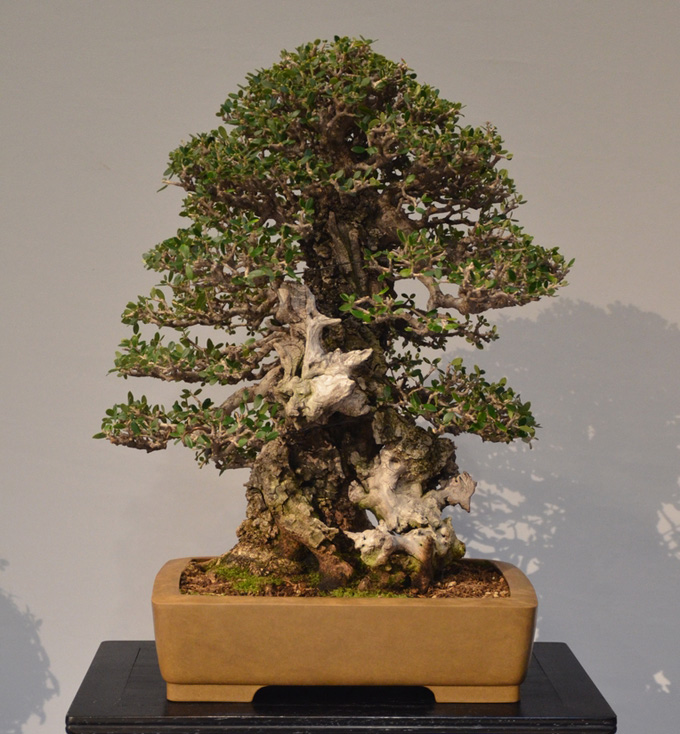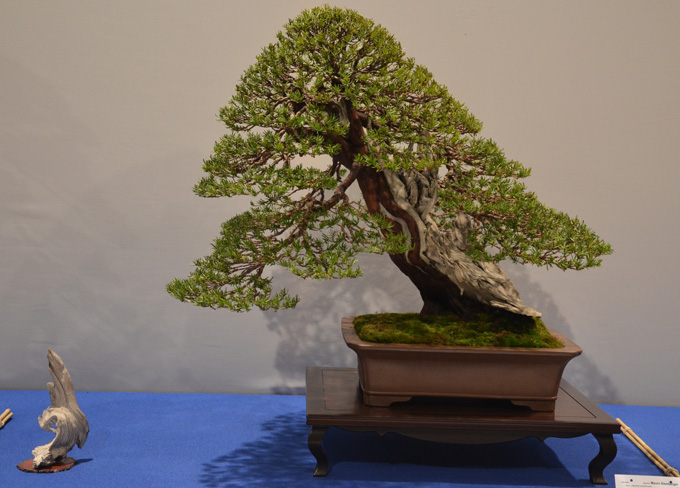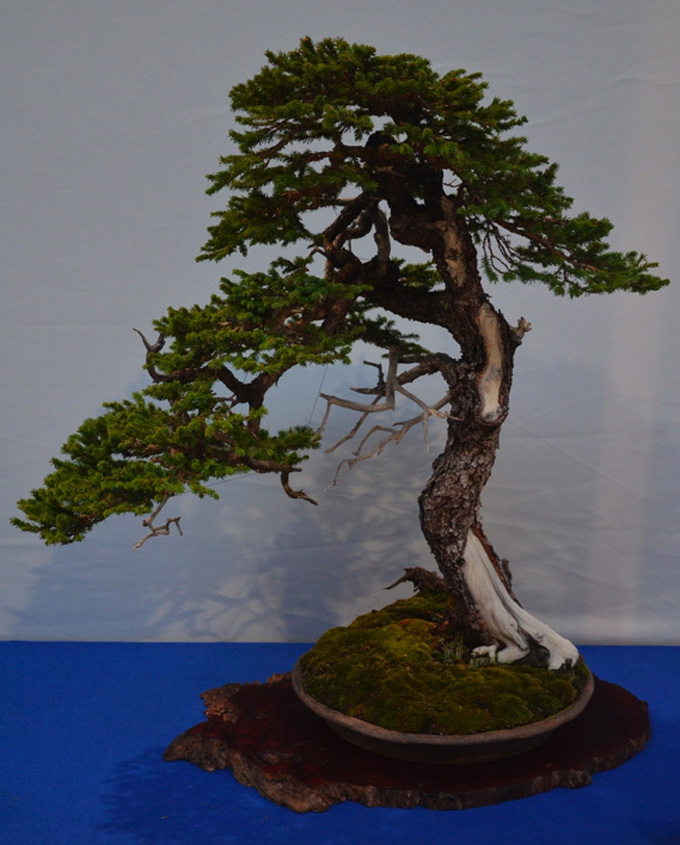 A formal upright collected European olive? I’ve seen a lot of magnificent collected European olives, but I’m not sure I’ve ever seen any as perfectly shaped and stupendously gnarled at the same time. The artist is Gabriel Romero Aguade.
A formal upright collected European olive? I’ve seen a lot of magnificent collected European olives, but I’m not sure I’ve ever seen any as perfectly shaped and stupendously gnarled at the same time. The artist is Gabriel Romero Aguade.
Noelanders Trophy 2012
The four trees shown here are all from the 13th Noelanders Trophy Exhibition, which was held in Heusden-Zolder, Belgium, way back in January. I borrowed the images from Bonsai – Living Art, the English version of the Slovenski blog (I recommend a visit, it’s a great bonsai blog, one of the best).
A couple firsts
I don’t know that I’ve ever seen a formal-upright collected European olive (see above). I’m not even sure that everyone would agree that it’s a formal-upright because of the trunk’s uneven base, but if it isn’t, it’s pretty close, and either way, it’s an exceptional bonsai.
The other first (for me at least) is using a piece of driftwood as a companion. I’ve seen all kinds of plants and plantings, stones, figurines and even what looks like a human skull, but I don’t think I’ve ever seen a simple piece of driftwood serving as a companion (it’s the second photo down).
 I don’t think there’s anything more compelling in our wonderful world of bonsai, than a well done Bunjin (Literati style bonsai). This elegantly meandering beauty, that ends up almost where it started, is by Vaclav Novak. It’s a Sabina juniper.
I don’t think there’s anything more compelling in our wonderful world of bonsai, than a well done Bunjin (Literati style bonsai). This elegantly meandering beauty, that ends up almost where it started, is by Vaclav Novak. It’s a Sabina juniper.
 The tree is powerful and wonderful, but it’s the companion that really caught my eye. Have you ever seen a piece of deadwood used as a bonsai companion? This Taxus (yew) and charming little piece of deadwood are by Mauro Stemberger.
The tree is powerful and wonderful, but it’s the companion that really caught my eye. Have you ever seen a piece of deadwood used as a bonsai companion? This Taxus (yew) and charming little piece of deadwood are by Mauro Stemberger.
 Raw, rugged and very sweet. Another excellent naturally dwarfed, collected Norway spruce, with its small needles and ancient bark. It belongs to Nicola Crivelli.
Raw, rugged and very sweet. Another excellent naturally dwarfed, collected Norway spruce, with its small needles and ancient bark. It belongs to Nicola Crivelli.
Thanks to Bonsai – Living Art for all the photos in this post.
Wayne
The beauty of that olive could stop a whooly mammoth in mid charge! Here in So. California, this upright style is extremley common, as many olive bonsai are developed from larger trees grown in the landscapes and gardens, etc around here. The tree can be flat cut and rooted easily in a green house. Usualy these trees have a basal flare and often uro’s and shari’s are carved. Branches and an apex grow fairly fast and then its up to the artist’s talent to grow the these branched in a well ramified and knarly way like with this awesome example.
The driftwood accent is a nice idea an I’m surprised that its not done more often. Recently, the local vietnamese bonsai club put a show on at a Buddist temple. Driftwood was a very common accent. Everything from huge pieces of California junipers to little pieces of jins for the smaller trees were all exibited on home made wood stands to fit similar to the way suiseki stands are created. The driftwood pieces all were preserved with some sort of acrylic in different shades from clear to to reds, yellows , whites and tans, etc.
Sometimes a beautiful piece of deadwood is not needed for the design of the tree and this is a nice way to still enjoy some of natures beauty.
Thanks Elliott,
Great info to chew on.
The whole issue of deadwood on non-conifers requires knowledge of individual genera (or even species in some cases). There’s an excellent article on just this (and uros in particular) at bonsai4me
Actually, I used the top 8″ of a dead Bald Cypress with a cascade Chinese Elm to represent the top of a distant forest below the Elm. It was positioned on a rough-edged piece of polished granite and told the story very clearly.